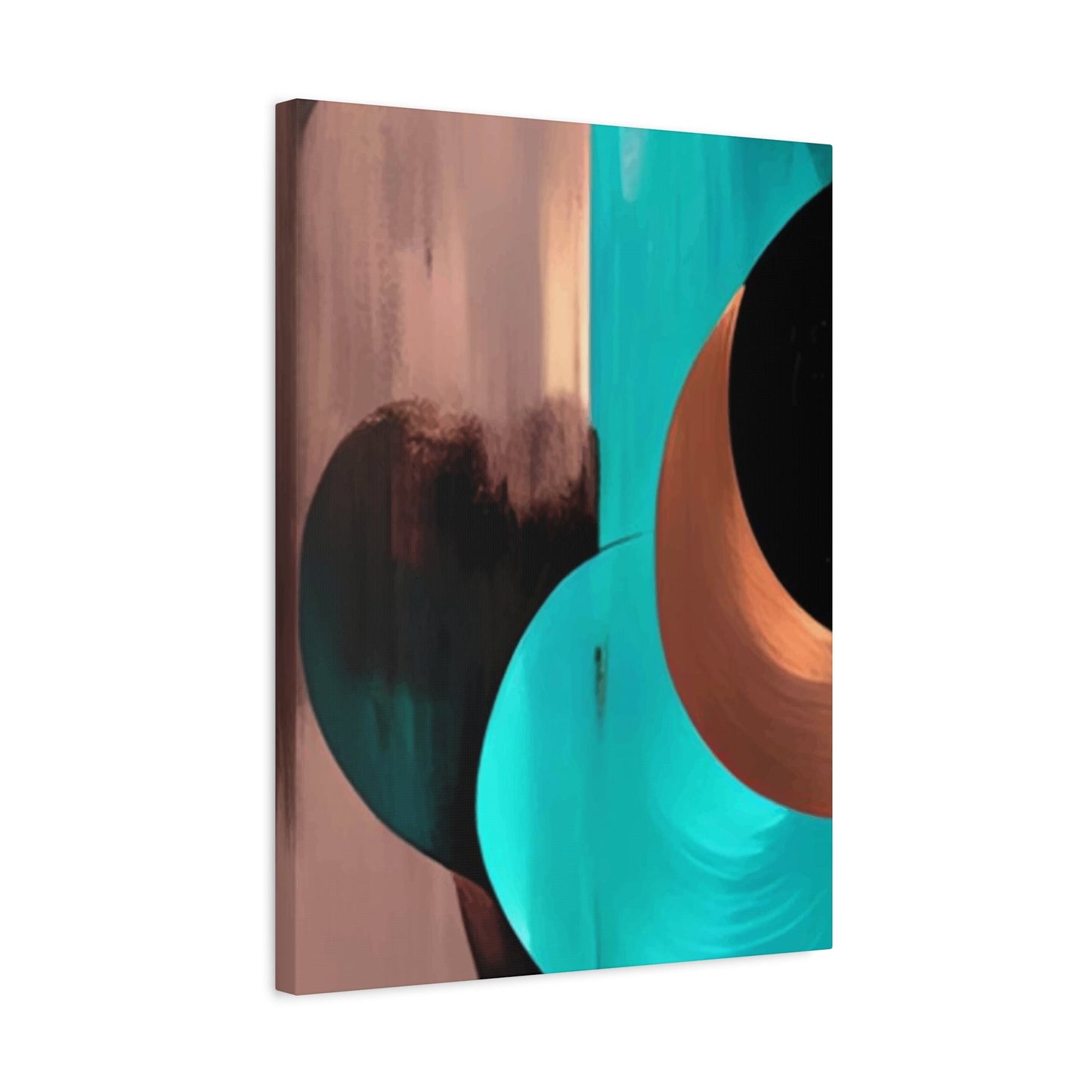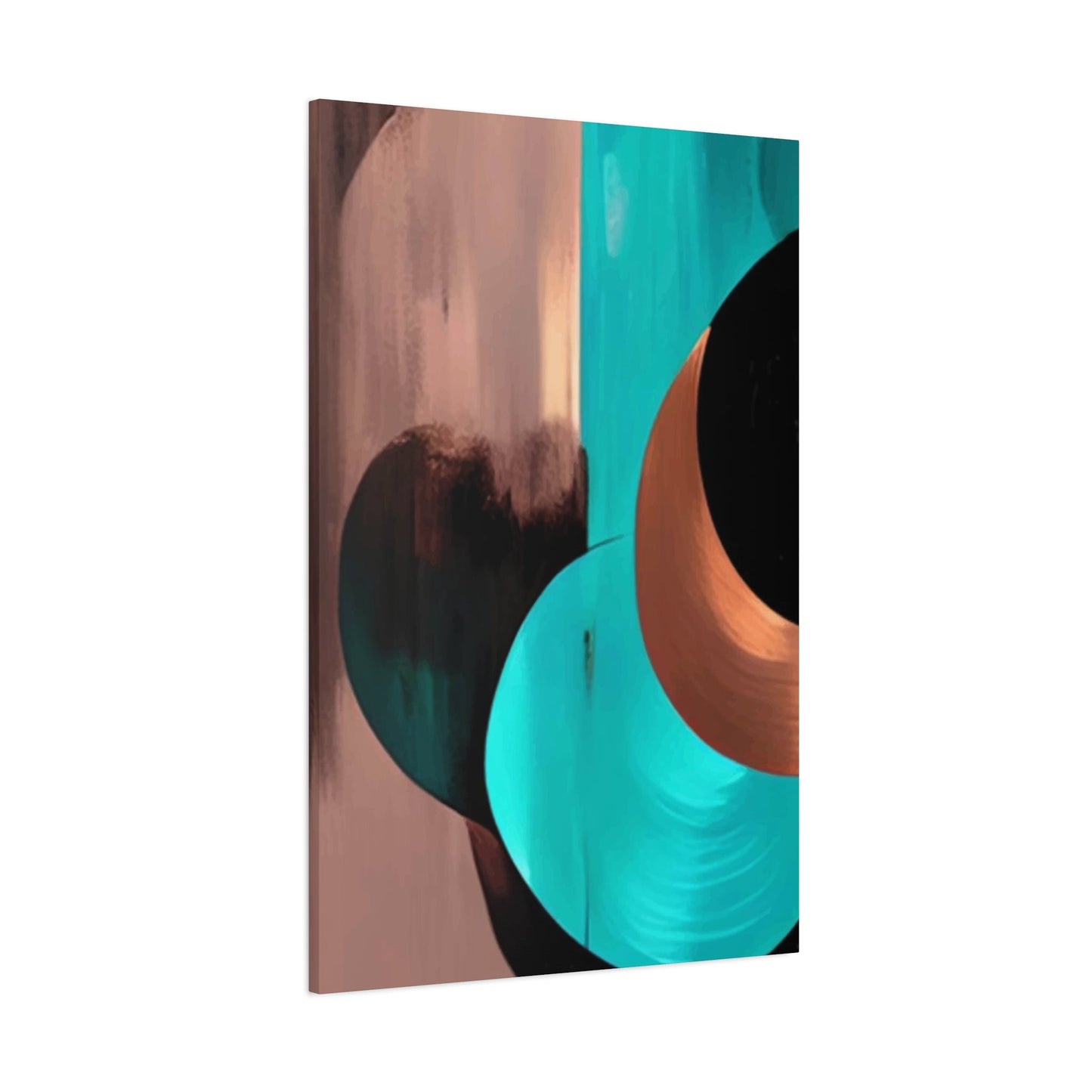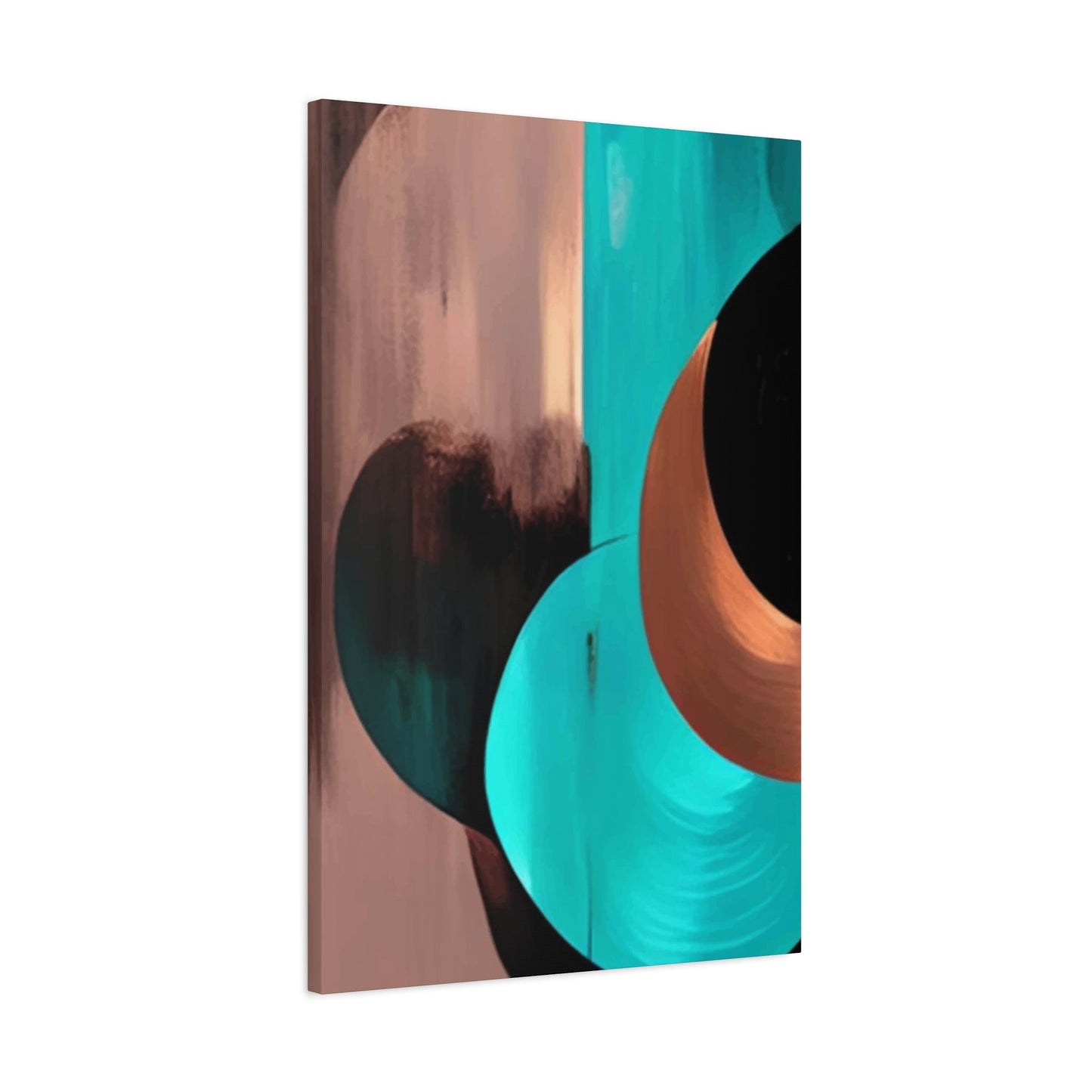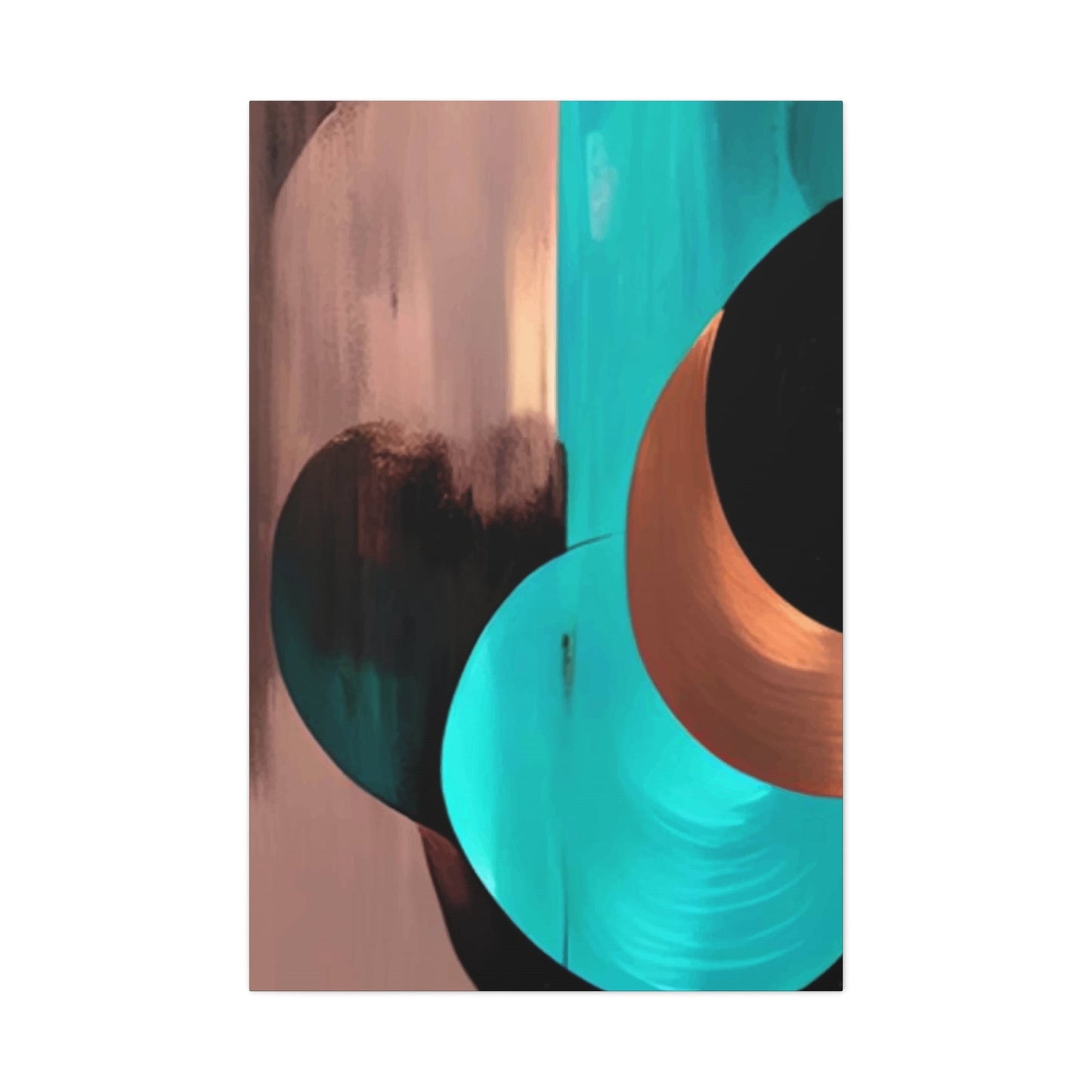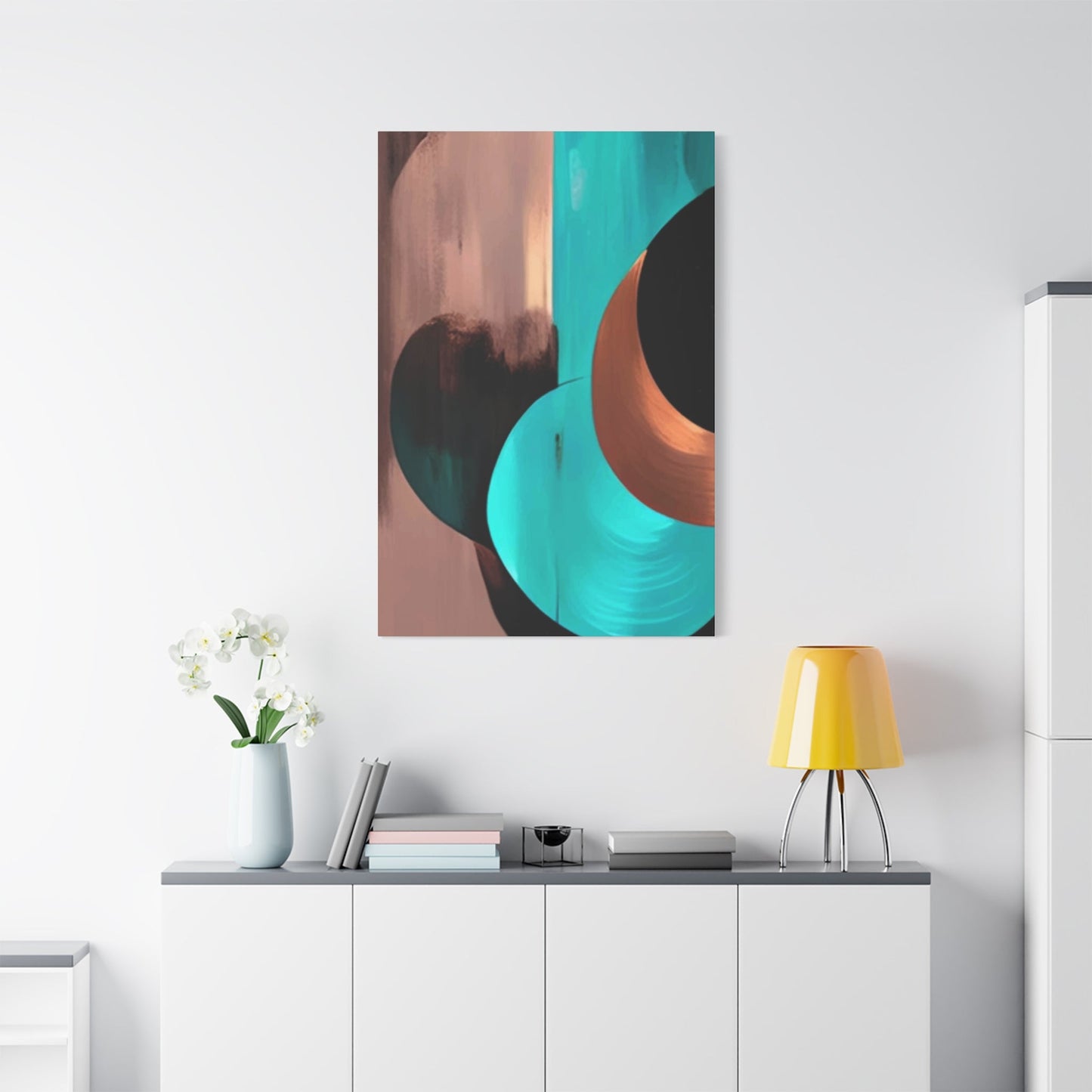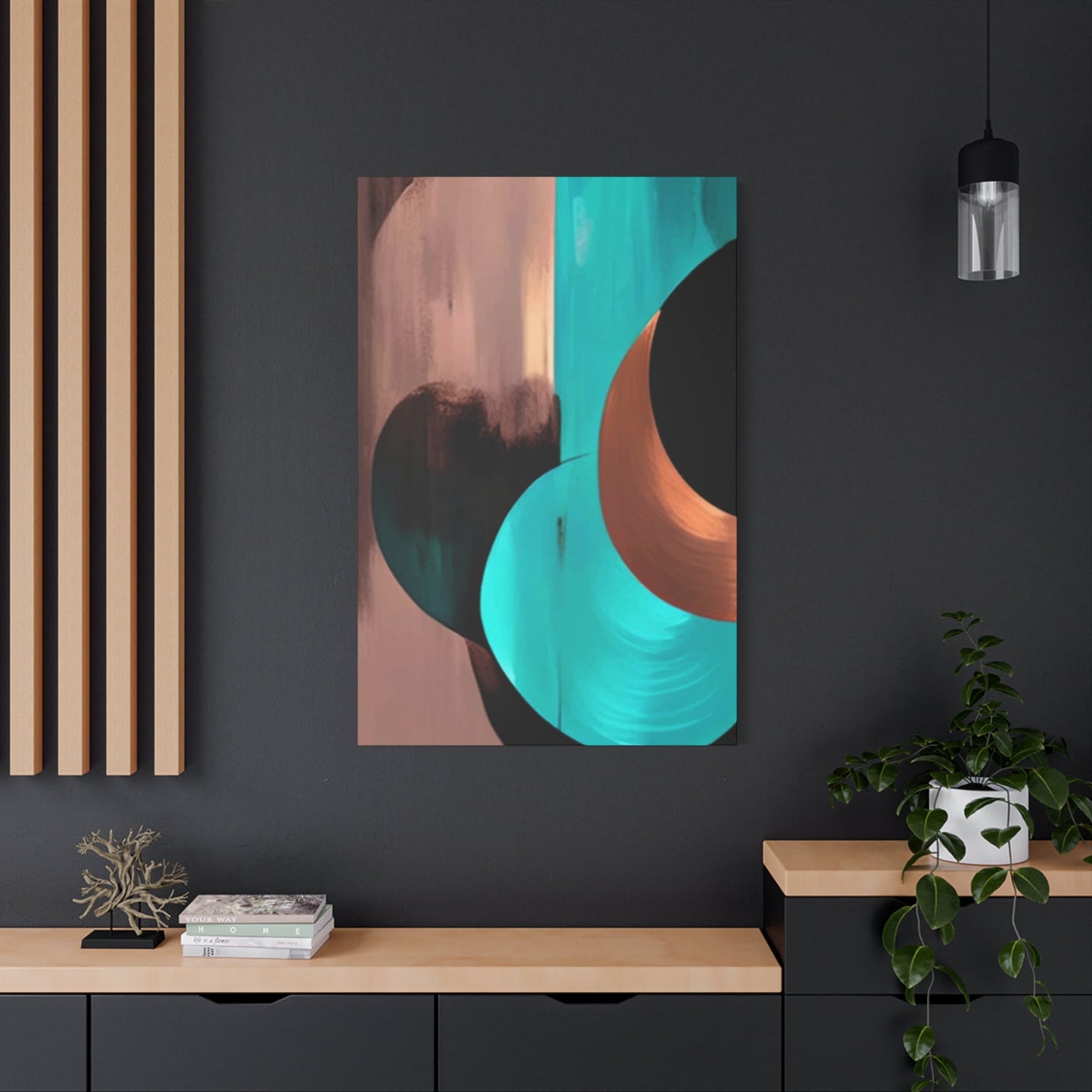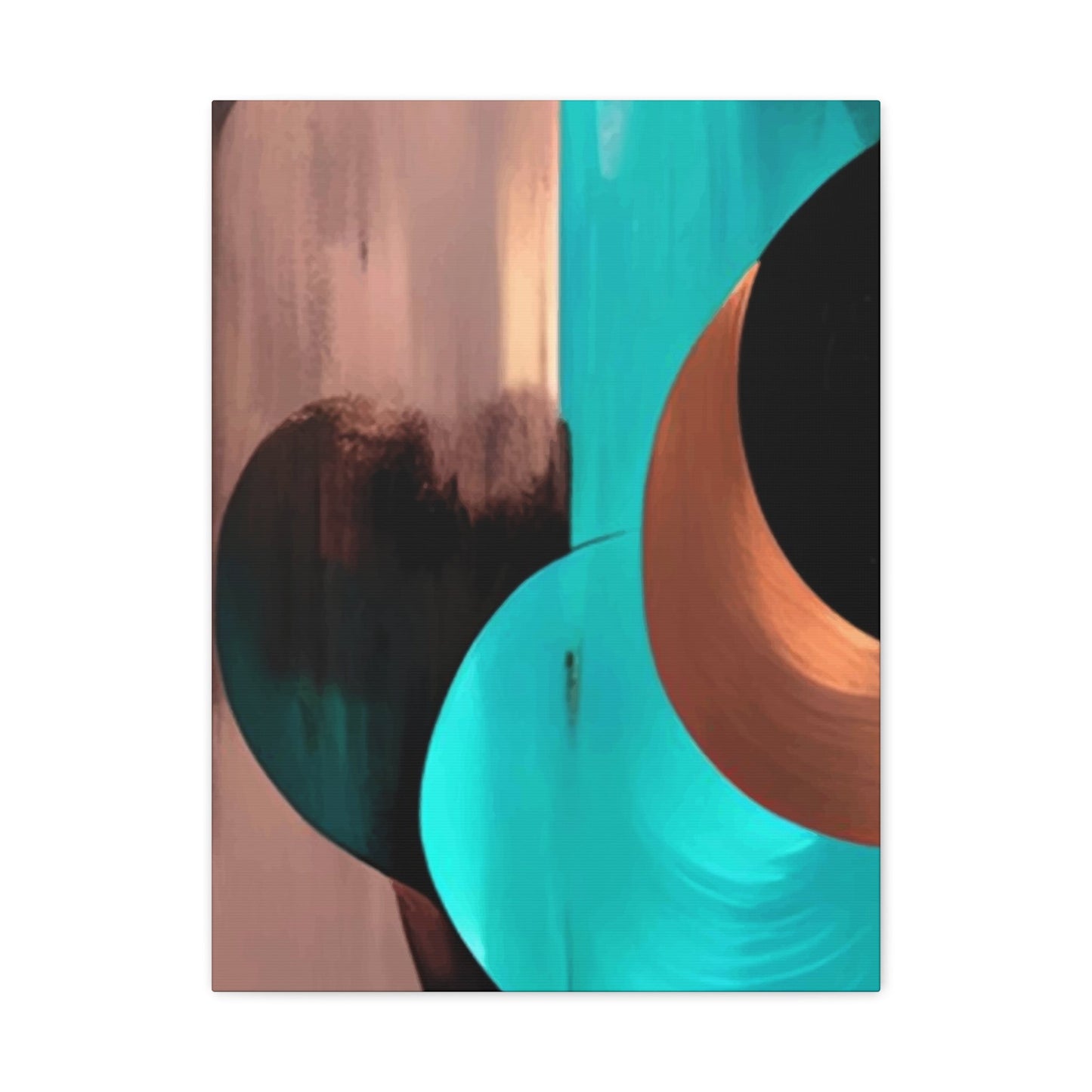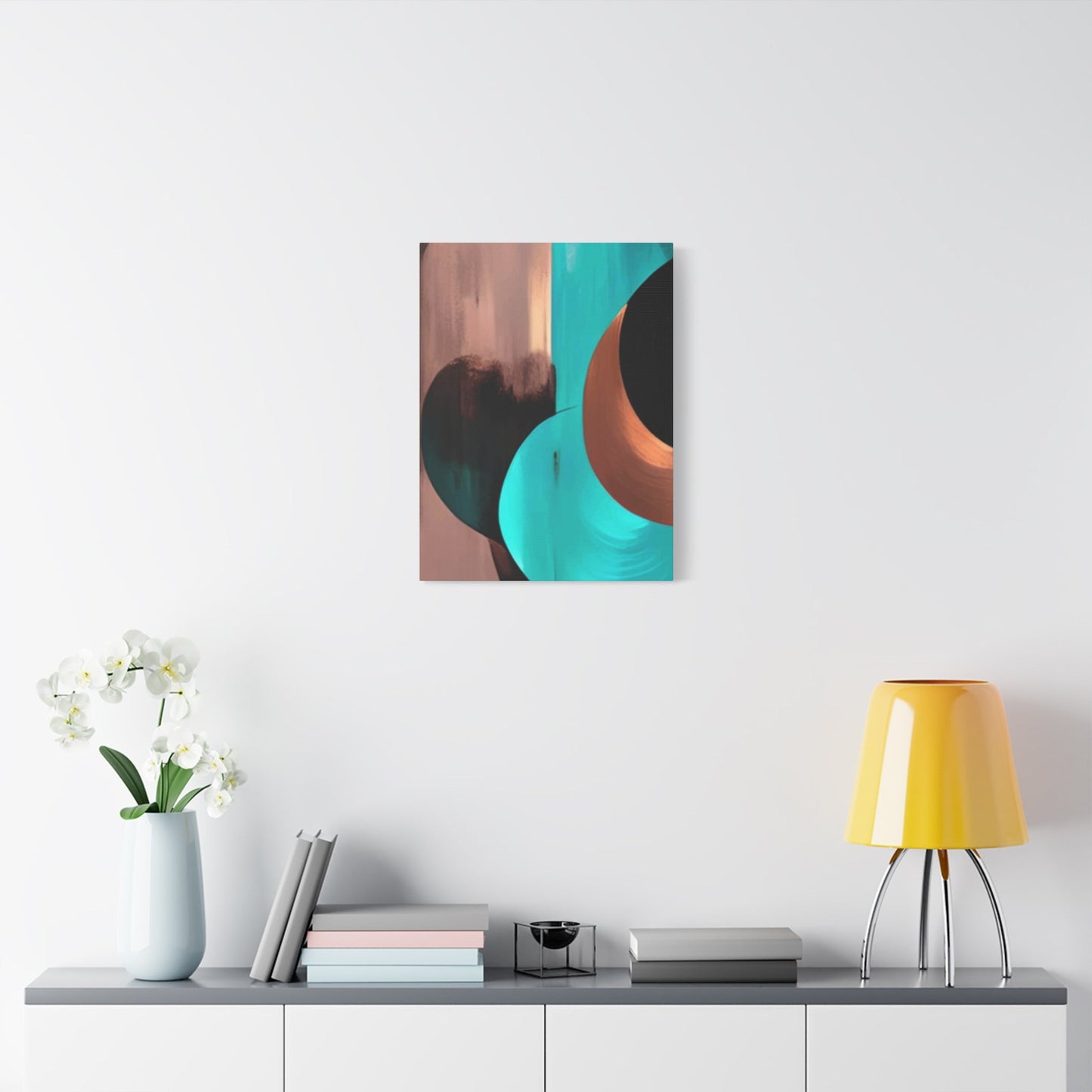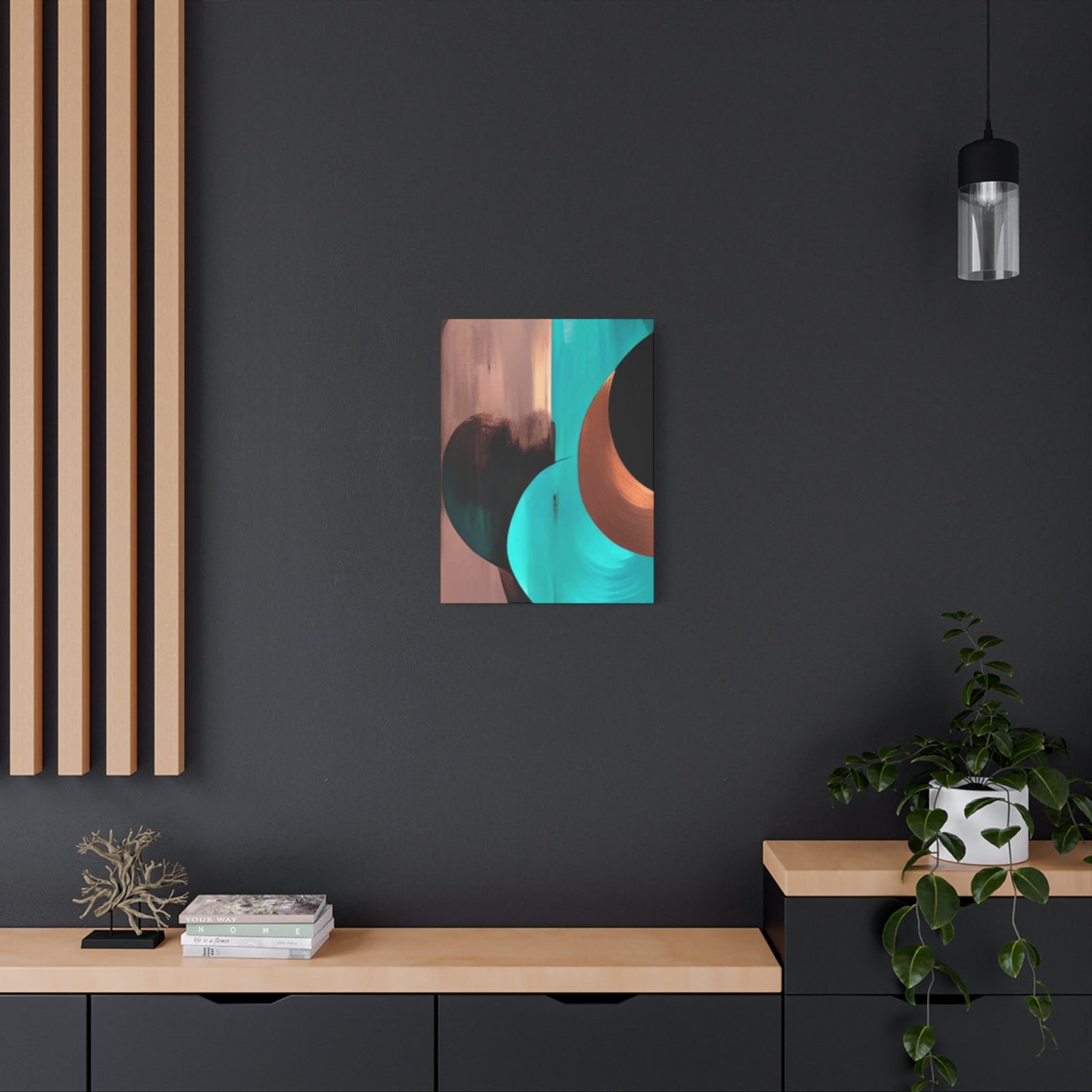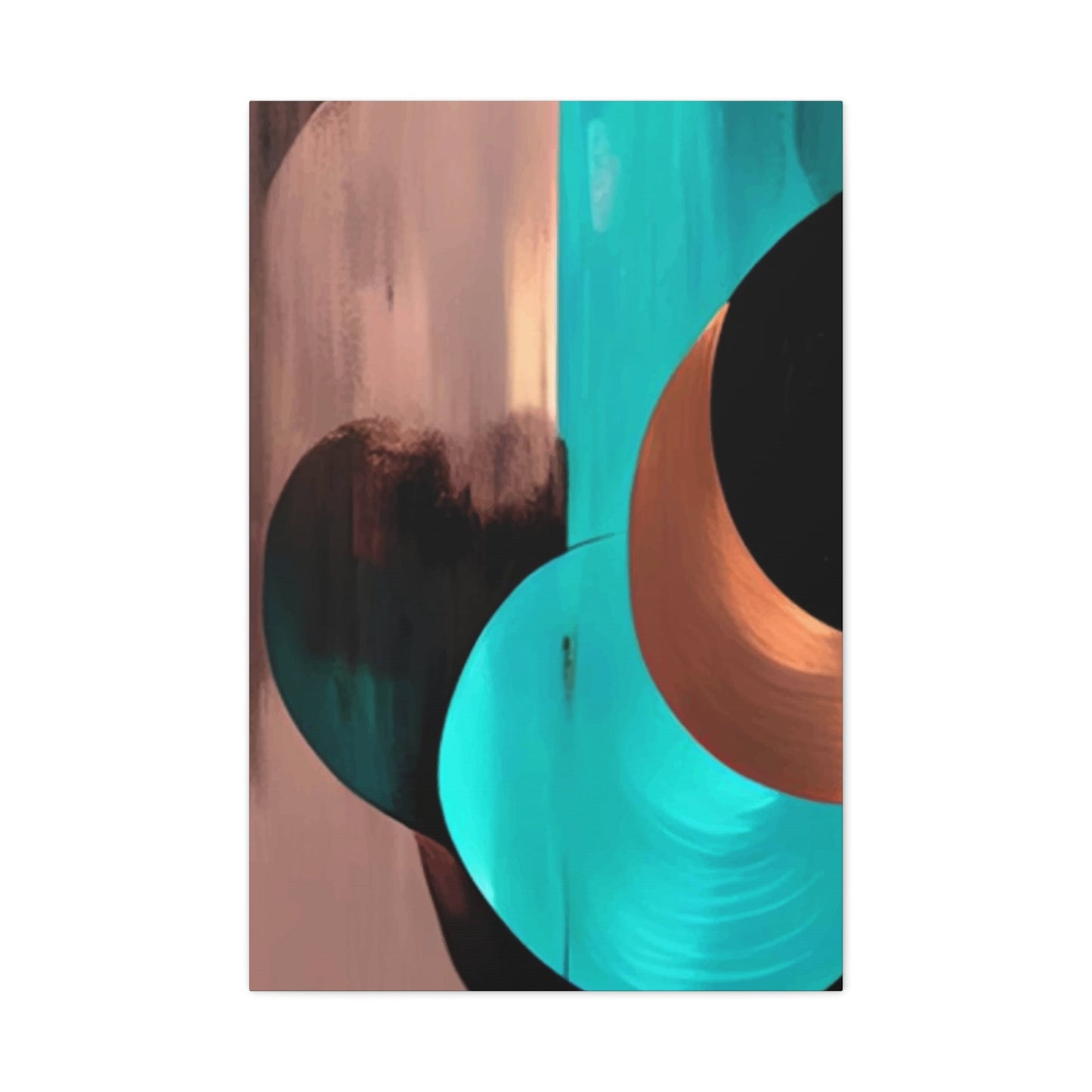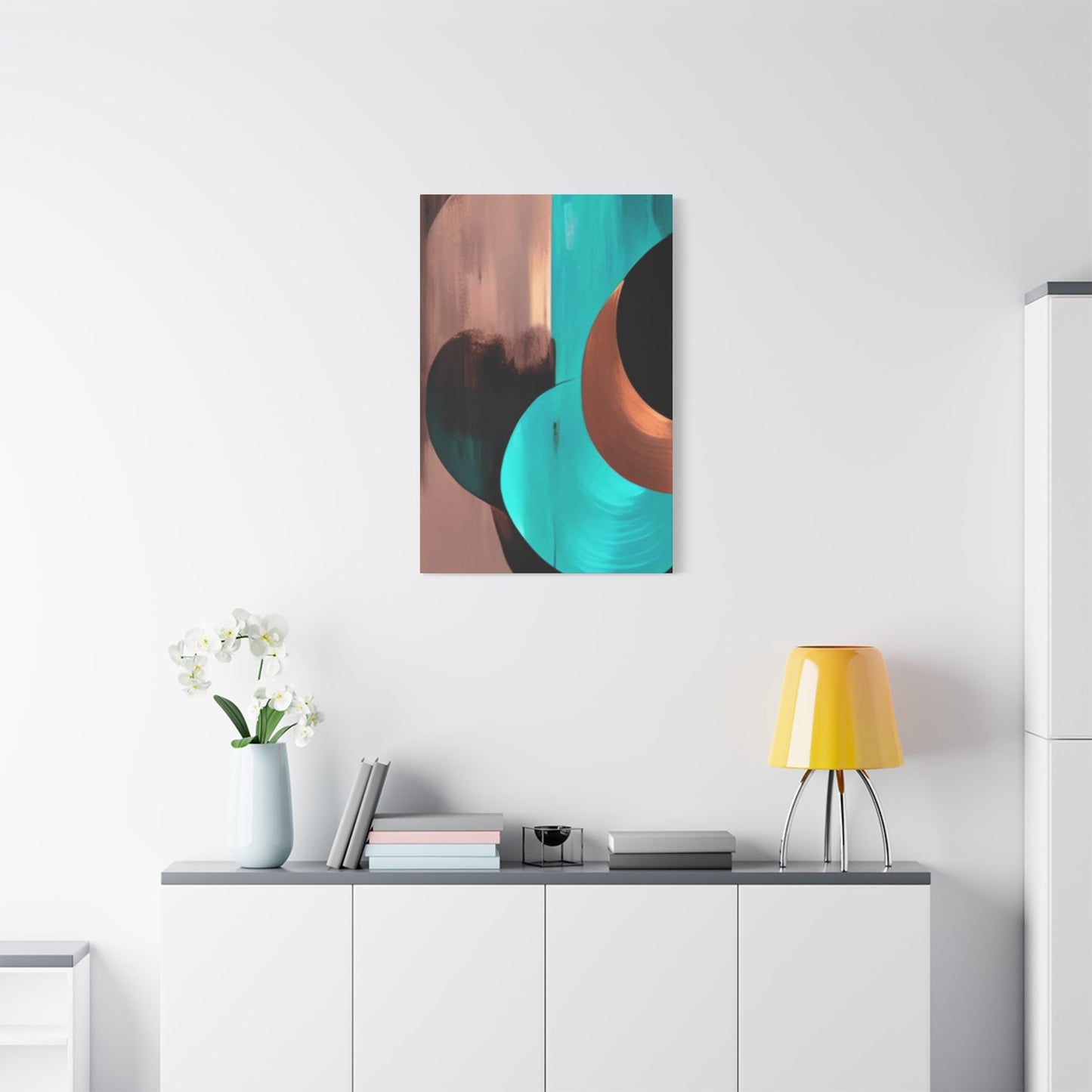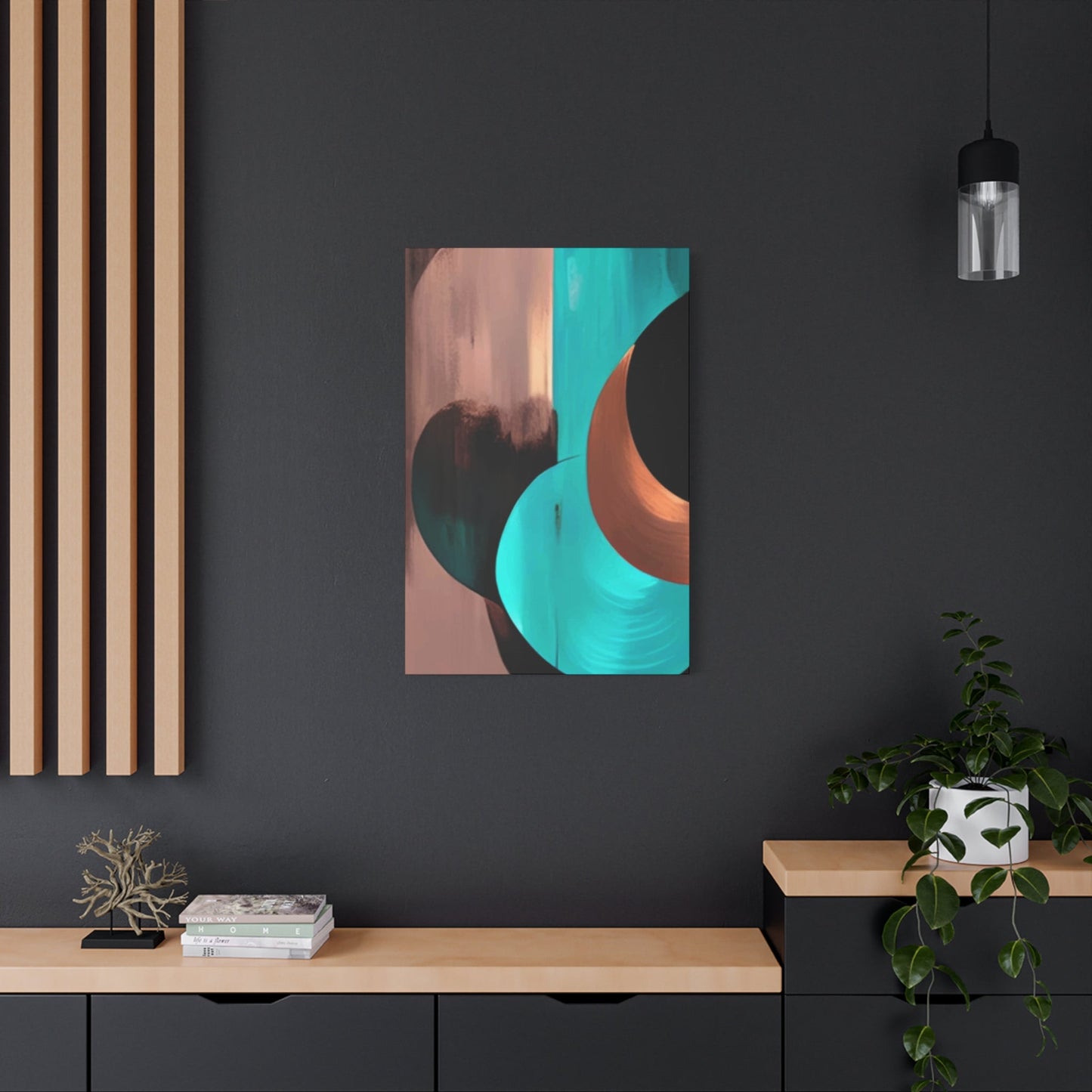Abstract Teal Wall Art: Adding Depth and Movement to Your Space
Teal has emerged as one of the most sought-after colors in contemporary home décor, offering a perfect balance between cool blue undertones and warm green notes. This versatile hue brings a sense of tranquility, sophistication, and visual interest to any room. When incorporated into canvas prints and artistic displays, teal creates an atmosphere that is both calming and energizing, making it an ideal choice for homeowners looking to refresh their living environments.
The popularity of teal in artistic compositions stems from its ability to evoke emotions ranging from peaceful serenity to vibrant energy. Whether you're drawn to abstract expressions, nature-inspired scenes, or geometric patterns, teal-toned artwork offers endless possibilities for personalizing your home. This comprehensive guide explores twenty distinct aspects of incorporating teal canvas prints into your living areas, providing detailed insights into selection, placement, care, and creative combinations that will help you make informed decisions about your artistic investments.
From understanding the psychological effects of this captivating color to learning professional techniques for displaying and maintaining your pieces, this article covers everything you need to know about teal wall art. Whether you're a seasoned art collector or just beginning to explore the world of canvas prints, these insights will empower you to create visually stunning environments that reflect your personal style while maximizing the unique qualities that make teal such a compelling choice for home decoration.
The Calming Effect of Teal in Wall Art
Teal possesses remarkable psychological properties that make it particularly effective in creating peaceful, restorative environments within homes. This color exists at the intersection of blue and green on the color spectrum, combining the calming properties of blue with the balancing, rejuvenating qualities of green. When featured prominently in canvas prints, teal can transform ordinary rooms into serene sanctuaries that promote relaxation and mental clarity.
Research in color psychology has consistently demonstrated that teal and similar blue-green hues can lower heart rate and reduce feelings of anxiety. When you incorporate teal canvas prints into your bedroom or meditation area, you're creating a visual environment that naturally encourages your body to enter a more relaxed state. The color works by triggering associations with calm natural elements like tropical waters, clear skies, and lush vegetation, helping your mind transition away from the stresses of daily life.
The calming influence of teal extends beyond simple color perception. When artists incorporate this hue into their compositions, they often pair it with soft gradients, flowing forms, and organic patterns that enhance its soothing qualities. A teal canvas print featuring gentle waves, abstract cloud formations, or soft botanical elements can serve as a focal point that draws the eye while simultaneously promoting a sense of peace. These artworks function almost like visual meditation tools, providing a point of focus that helps quiet racing thoughts.
For individuals who struggle with sleep difficulties or high stress levels, placing teal artwork in the bedroom can contribute to better rest patterns. The color's association with water and natural environments creates subconscious connections to peaceful settings, making it easier for the mind to disengage from worries and concerns. Unlike more stimulating colors that can keep the brain alert, teal gently cradles attention without demanding excessive mental energy.
The versatility of teal's calming properties means it works effectively in various room sizes and lighting conditions. In smaller rooms with limited natural light, teal canvas prints can create an illusion of depth and openness, preventing the area from feeling claustrophobic. In larger, well-lit rooms, teal artwork anchors the visual field without overwhelming the senses, providing just enough color interest to keep the environment engaging while maintaining its peaceful character.
When selecting teal canvas prints specifically for their calming qualities, consider pieces that incorporate softer shades rather than highly saturated versions of the color. Muted teals, dusty blue-greens, and watercolor-style renditions tend to produce the most soothing effects. These gentler interpretations of the color create atmospheres that feel like gentle embraces rather than bold statements, perfect for areas where tranquility is the primary goal.
Using Teal to Add Vibrancy to Rooms
While teal excels at creating calm environments, it also possesses an energizing quality that can inject life and personality into dull or uninspiring rooms. The vibrant nature of saturated teal makes it an excellent choice for adding visual punch to neutral color schemes or breathing new energy into tired decorating approaches. When used strategically in canvas prints, teal can transform lackluster rooms into dynamic, engaging environments that feel fresh and contemporary.
The key to using teal for vibrancy lies in understanding how different shades and saturations of the color interact with existing décor elements. Bright, highly saturated teals command attention and create focal points that draw the eye immediately upon entering a room. These bolder versions of the color work particularly well in modern and contemporary settings where clean lines and strong color statements are valued. A large canvas print featuring vivid teal as the dominant color can become the centerpiece around which an entire room's design revolves.
In rooms dominated by neutrals like white, beige, gray, or taupe, teal canvas prints provide the perfect contrast to prevent the environment from feeling sterile or bland. The color's richness stands out dramatically against neutral backgrounds, creating visual interest without requiring extensive redecoration. This approach allows homeowners to refresh their rooms affordably by simply adding one or two well-chosen teal artworks rather than undertaking major renovation projects.
Teal's vibrancy also makes it effective for creating energy in functional areas like home offices, craft rooms, or exercise areas. The color stimulates creativity and mental alertness while remaining sophisticated enough for professional environments. Canvas prints featuring teal in geometric patterns, bold abstract designs, or energetic brushstrokes can motivate and inspire while maintaining visual appeal. These pieces serve as constant reminders of vitality and possibility, helping to combat the mental fatigue that often accompanies work or creative endeavors.
The placement of vibrant teal artwork significantly impacts its effectiveness in energizing a room. Positioning a bold teal canvas print opposite the main entrance to a room ensures it creates immediate impact, setting an energetic tone from the moment someone enters. Alternatively, placing vibrant teal pieces in areas where people naturally pause, such as above seating areas or across from dining tables, ensures the artwork receives sustained attention and continues to energize the environment throughout the day.
Lighting plays a crucial role in maximizing the vibrancy of teal canvas prints. Natural daylight brings out the full spectrum of teal's blue and green undertones, making the color appear particularly alive and dynamic. In rooms with abundant windows, positioning teal artwork where it receives indirect natural light throughout the day ensures the color maintains its vibrancy without fading. For rooms with limited natural light, installing picture lights or adjustable spotlights directed at teal canvas prints can enhance their visual impact and ensure they continue to energize the area even during evening hours.
When combining multiple teal pieces for maximum vibrancy, vary the shades and saturations to create depth and visual movement. Pairing a deeply saturated teal canvas with pieces featuring lighter aqua or turquoise tones creates a layered effect that feels dynamic rather than monotonous. This approach prevents the color from overwhelming the senses while still delivering the energizing qualities that make teal such an effective choice for adding life to rooms.
Small vs Large Teal Canvas Prints
The size of teal canvas prints significantly influences their visual impact and the way they interact with surrounding décor elements. Understanding the advantages and appropriate applications of both small and large teal artworks enables homeowners to make strategic choices that enhance their rooms effectively. Each size category offers distinct benefits and presents unique opportunities for creating compelling visual arrangements.
Small teal canvas prints, typically ranging from eight inches to twenty-four inches in their longest dimension, excel at creating intimate visual moments and work beautifully in gallery wall arrangements. These compact pieces allow for greater flexibility in placement, making them ideal for areas with limited wall area such as hallways, bathrooms, powder rooms, or narrow wall sections between windows or doors. Small teal prints can be grouped together to create cohesive collections that tell visual stories or express thematic concepts without requiring the commitment of a single large piece.
The advantage of small teal canvas prints lies in their accessibility and affordability. These pieces typically cost less than their larger counterparts, making them excellent entry points for new collectors or budget-conscious decorators. Multiple small prints can be collected over time, allowing homeowners to build their art collections gradually while experimenting with different styles, shades of teal, and artistic approaches. This incremental approach to art acquisition reduces financial pressure while still enabling meaningful personalization of living areas.
Small teal prints also shine in supporting roles, complementing larger artworks or architectural features without competing for attention. A small teal canvas placed near a reading nook, beside a desk, or on a narrow wall section adds color interest without overwhelming the area. These pieces create visual punctuation marks that guide the eye through a room and provide opportunities for layering decorative elements like plants, books, or sculptural objects.
Large teal canvas prints, generally measuring thirty inches or more in their longest dimension, make bold statements that anchor entire rooms. These substantial pieces command attention and serve as natural focal points around which other design elements can be organized. A large teal canvas positioned above a sofa, bed, or fireplace immediately establishes visual hierarchy and provides a strong foundation for the room's overall aesthetic direction.
The impact of large teal prints extends beyond simple visual presence. These substantial artworks can alter the perceived proportions of a room, making low ceilings appear higher when vertical pieces are used, or making narrow rooms feel wider when horizontal formats are selected. Large canvases also create opportunities for appreciating artistic details and techniques that might be lost in smaller formats. Brushstrokes, texture variations, and subtle color gradations become more apparent and contribute to the overall viewing experience.
Large teal canvas prints work particularly well in minimalist or contemporary settings where clean lines and uncluttered surfaces predominate. A single large piece provides sufficient visual interest to prevent the room from feeling empty while maintaining the simplicity that characterizes these design approaches. The scale of these artworks ensures they hold their own against large furniture pieces and expansive wall areas without appearing insignificant or afterthought-like.
When deciding between small and large teal canvas prints, consider the room's proportions, existing furniture scale, and intended atmosphere. Rooms with high ceilings and substantial furniture pieces generally benefit from larger artworks that match the scale of surrounding elements. Conversely, rooms with lower ceilings, smaller furniture, or more intimate dimensions often feel more balanced with small to medium-sized prints. The distance from which the artwork will typically be viewed also matters; pieces viewed from across large rooms need sufficient size to remain visually engaging, while artworks in close-quarters environments can be smaller and still create impact.
Caring for Teal-Toned Artwork
Proper maintenance and care are essential for preserving the beauty and longevity of teal canvas prints. The vibrant blues and greens that make these pieces so appealing can fade or deteriorate if not protected from environmental factors and handled appropriately. Understanding the specific challenges facing teal-toned artwork and implementing preventive measures ensures your investment remains visually stunning for years to come.
Light exposure represents the primary threat to teal canvas prints, particularly sunlight which contains ultraviolet rays that break down pigments over time. Even high-quality, lightfast pigments can experience degradation when subjected to prolonged direct sunlight. To protect teal artwork, avoid hanging canvas prints in locations where they receive direct sun for extended periods, particularly during the intense midday hours. If your preferred placement does receive natural light, consider installing UV-filtering window treatments that block harmful rays while still allowing natural illumination to enter the room.
The intensity and type of artificial lighting also impact the longevity of teal canvas prints. Incandescent bulbs generate heat that can accelerate deterioration, while certain LED lights emit blue light wavelengths that may affect pigment stability. When illuminating teal artwork with picture lights or spotlights, use LED bulbs specifically designed for art illumination, which produce minimal heat and UV radiation. Position lights to avoid creating hot spots on the canvas surface, and consider using timers to limit the duration of artificial illumination.
Humidity control plays a crucial role in maintaining canvas integrity. Excessive moisture can cause canvas fibers to expand and contract, leading to warping, sagging, or the development of mold and mildew. Teal pigments, particularly those with green undertones, can be susceptible to moisture-related color shifts. Maintain consistent indoor humidity levels between forty and fifty-five percent using dehumidifiers in damp climates or humidifiers in arid environments. Avoid hanging teal canvas prints in bathrooms or other high-humidity areas unless proper ventilation systems are in place.
Temperature fluctuations pose another risk to canvas artwork. Extreme heat can cause adhesives and protective coatings to soften or yellow, while cold temperatures may make canvas fibers brittle. Keep teal prints away from heating vents, radiators, fireplaces, and exterior walls that experience significant temperature variations. Maintaining stable room temperatures between sixty-five and seventy-five degrees Fahrenheit provides optimal conditions for preserving both canvas and pigments.
Dust accumulation may seem minor but can actually contribute to long-term damage if allowed to build up on canvas surfaces. Dust particles attract moisture and can create abrasive conditions during cleaning. Every few months, gently dust teal canvas prints using a soft, clean brush or a microfiber cloth specifically designed for delicate surfaces. Use light, sweeping motions and avoid applying pressure that might push dust particles into the canvas weave. Never use commercial cleaning products, water, or chemical solutions on canvas prints unless specifically recommended by the manufacturer or a professional conservator.
Physical damage prevention requires thoughtful placement and handling practices. Hang teal canvas prints securely using appropriate hardware that can support the artwork's weight without risk of falling. Ensure the hanging system distributes weight evenly across the canvas frame to prevent stress points that could cause warping. When moving or adjusting canvas prints, handle them by the frame rather than touching the canvas surface, as oils from skin can transfer to the fabric and potentially affect pigments over time.
For valuable or particularly cherished teal canvas prints, consider applying a protective varnish or coating that shields pigments from environmental factors while enhancing color vibrancy. Many professional art suppliers offer UV-protective sprays specifically formulated for canvas artwork. If applying such products yourself, test them on an inconspicuous area first or consult with a professional framer who can apply protective coatings using proper techniques and materials.
Framing Ideas for Teal Wall Art
The framing choices you make for teal canvas prints significantly influence their visual impact and the way they integrate with surrounding décor. While many canvas prints are designed to be displayed without traditional frames, utilizing various framing options can enhance the artwork's presence, protect its edges, and create cohesive visual relationships with other room elements. Understanding different framing approaches enables you to maximize the aesthetic potential of your teal artwork.
Gallery-wrapped canvas presents the most popular contemporary framing approach for teal prints. This method involves stretching the canvas around wooden stretcher bars, with the image continuing around the edges or the edges finished in a complementary color. Gallery-wrapped teal canvases can be hung directly on walls without additional framing, creating a clean, modern appearance that allows the artwork to feel integrated with the architecture rather than applied to it. This approach works particularly well for abstract teal compositions where the three-dimensional quality of the wrapped edges adds visual interest from multiple viewing angles.
Traditional picture frames provide opportunities to enhance teal artwork with complementary materials and finishes. When selecting frames for teal canvas prints, consider how frame colors interact with the artwork's specific teal shade. Warm-toned woods like cherry, walnut, or oak create beautiful contrast with cool teal hues, adding richness and grounding the color palette. These natural wood frames work especially well with nature-inspired teal prints featuring landscapes, seascapes, or botanical subjects.
Metallic frames offer another compelling option for teal canvas prints, particularly in contemporary or glamorous decorating schemes. Silver, chrome, or brushed nickel frames create sophisticated pairings with teal, emphasizing the color's cool undertones and adding reflective elements that catch light and create visual dynamism. For warmer variations of teal that lean more toward turquoise or have stronger green components, gold, brass, or copper frames provide elegant contrast while adding warmth that prevents the overall presentation from feeling too cold.
White or off-white frames create fresh, clean presentations that allow teal artwork to take center stage without competing visual elements. This classic approach works across multiple decorating styles, from coastal and farmhouse to modern and minimalist. White frames particularly enhance lighter shades of teal, creating cohesive presentations that feel airy and open. The simplicity of white framing ensures the artwork's colors and composition remain the primary focus while still providing structural definition and protection.
Black frames deliver drama and contemporary sophistication to teal canvas prints. The strong contrast between deep black frame materials and teal artwork creates bold visual statements that command attention. Black frames work especially well with highly saturated, vibrant teals and with artwork featuring strong graphic elements or abstract compositions. This framing choice emphasizes modernity and pairs beautifully with contemporary furniture and décor accessories.
Floating frames, which create the illusion that canvas prints are suspended within the frame rather than pressed against it, add depth and dimension to teal artwork presentations. These frames typically include a small gap between the canvas edge and the frame's inner edge, creating a shadow line that enhances the three-dimensional quality of the piece. Floating frames work particularly well with thick gallery-wrapped canvases and add a gallery-quality presentation that elevates the perceived value of the artwork.
For creating cohesive gallery wall arrangements featuring multiple teal canvas prints, consistency in framing approach helps unify diverse artworks. Using identical frame styles, colors, and widths across all pieces creates visual harmony even when the artworks themselves vary in style, subject matter, or exact teal shade. Alternatively, selecting a limited palette of two or three complementary frame styles creates visual interest while maintaining sufficient consistency to prevent the arrangement from feeling chaotic.
Matting considerations also influence the final presentation of teal canvas prints, particularly when traditional framing approaches are used. White or cream mats create breathing room around artwork, preventing the composition from feeling cramped within the frame. The mat width should relate proportionally to the artwork size; smaller prints generally benefit from wider mats that prevent them from appearing insignificant, while larger pieces can succeed with narrower mats or no matting at all. For particularly special teal prints, consider double matting using a thin inner mat in a complementary color like coral, gold, or deep navy that picks up accent colors within the artwork itself.
Combining Teal with Complementary Colors
The strategic combination of teal with complementary and analogous colors creates dynamic visual relationships that enhance the impact of canvas prints while creating cohesive room designs. Understanding color theory principles and how different hues interact with teal enables you to build sophisticated color palettes that feel intentional and professionally designed. These combinations can be expressed through multi-colored canvas prints, arrangements of multiple artworks, or the relationship between teal artwork and surrounding décor elements.
Coral and peachy tones represent teal's direct complementary colors on the color wheel, creating vibrant, energizing combinations that feel balanced and complete. When teal canvas prints are paired with coral accents in throw pillows, curtains, or decorative objects, the result is a lively, tropical aesthetic that feels both sophisticated and playful. Within canvas prints themselves, artists often use coral or salmon tones alongside teal to create compositions with natural visual tension that keeps the eye engaged and moving through the artwork.
Warm metallics like gold, copper, and rose gold create luxurious pairings with teal that feel elegant and current. These combinations work particularly well in contemporary and transitional settings where a touch of glamour is desired without veering into overly ornate territory. Canvas prints featuring teal backgrounds with gold accents or abstract teal compositions with metallic elements catch light beautifully and add a sense of richness to rooms. The warmth of metallic tones balances teal's coolness, creating equilibrium that feels comfortable and inviting.
Navy blue and deeper teals form analogous color relationships that create sophisticated, layered palettes with depth and complexity. Combining multiple shades from the blue-green family in canvas print arrangements or within single artworks creates monochromatic effects that feel calm and cohesive while avoiding monotony. These deeper color combinations work beautifully in studies, libraries, or bedrooms where a more subdued, intellectual atmosphere is desired. The layering of different teal and blue tones creates the impression of depth, similar to looking into deep water or across ocean horizons.
Crisp white paired with teal creates fresh, clean combinations that feel particularly appropriate for coastal, nautical, or modern minimalist settings. Teal canvas prints displayed against white or off-white walls create maximum contrast and visual impact, allowing the artwork's colors to appear particularly vibrant and saturated. Within canvas prints themselves, compositions featuring teal and white in graphic patterns or abstract forms deliver modern appeal and work well in streamlined, uncluttered environments.
Soft gray tones provide sophisticated neutral backdrops that allow teal artwork to shine without overwhelming the senses. Unlike pure white which creates stark contrast, gray creates gentler relationships with teal that feel refined and contemporary. Light gray walls provide beautiful foundations for teal canvas prints, while incorporating charcoal or slate gray elements within multi-colored canvas compositions adds depth and grounding that prevents teal from feeling too bright or juvenile.
Mustard yellow and golden tones create unexpected, fashion-forward combinations with teal that feel bold and confident. This pairing has gained popularity in contemporary décor for its ability to create visual interest without relying on traditional complementary relationships. Canvas prints featuring teal and mustard yellow in abstract or geometric compositions make strong statements that work particularly well in modern settings. The combination feels both retro and current, referencing mid-century color palettes while remaining fresh and relevant.
Blush pink and mauve tones create feminine, romantic pairings with teal that soften its coolness while maintaining sophisticated appeal. These combinations work beautifully in bedrooms, dressing rooms, or any environment where a gentler, more nurturing atmosphere is desired. Canvas prints featuring teal paired with soft pink or lavender tones create dreamy, ethereal effects that feel calming without becoming saccharine. The balance between teal's cool clarity and pink's warm softness creates palettes that feel balanced and complete.
Earth tones including terracotta, rust, burnt sienna, and warm browns create grounded, organic pairings with teal that reference natural environments. These combinations evoke desert landscapes meeting turquoise skies or tropical waters bordered by sandy beaches. Canvas prints incorporating teal with earth tones feel accessible and welcoming, avoiding the potentially cold feeling that can result from pairing teal with only other cool colors. The warm-cool balance creates dynamic tension that feels natural and comfortable.
Abstract Designs Featuring Teal Hues
Abstract teal artwork offers tremendous versatility and expressive potential, freeing both artists and viewers from representational constraints while creating visually compelling pieces that enhance contemporary homes. The abstract genre allows teal to be explored in its purest form, divorced from specific subject matter and celebrated for its inherent color qualities and emotional resonances. Understanding the various approaches to abstract teal canvas prints helps collectors select pieces that align with their aesthetic preferences and décor goals.
Fluid art techniques create organic, flowing compositions where teal interacts with other colors in unpredictable, mesmerizing ways. These pieces often feature the results of pouring, dripping, or manipulating liquid paint on canvas surfaces, creating marble-like effects, cellular patterns, or sweeping color movements. Teal works beautifully in fluid art compositions, particularly when combined with white, gold, or navy to create depth and visual complexity. The natural movement captured in these pieces adds dynamic energy to rooms while maintaining the calming qualities inherent to teal itself.
Geometric abstract compositions featuring teal deliver structure and order, creating pieces that feel both artistic and architectural. These works might include overlapping shapes, tessellated patterns, color blocking, or linear elements that create visual rhythm and movement. Teal in geometric abstracts often appears in combination with contrasting colors that define boundaries and create spatial relationships. These pieces work particularly well in modern and contemporary settings where clean lines and organized visual elements are valued.
Expressionistic abstract teal paintings showcase energetic brushwork, gestural marks, and emotional intensity. These pieces often feature visible brushstrokes, palette knife marks, or other evidence of the artist's physical engagement with the medium. Teal in expressionistic abstracts might appear in bold swaths, energetic strokes, or layered applications that create texture and depth. The emotional immediacy of these pieces adds personality and human presence to rooms, creating focal points that feel alive and dynamic.
Minimalist abstract works featuring teal embrace simplicity and restraint, often utilizing limited color palettes and simple compositional structures. These pieces might consist of single teal fields, subtle gradations from light to dark teal, or sparse arrangements of teal elements on neutral backgrounds. The restraint characteristic of minimalist abstraction allows viewers to focus on subtle variations in color, texture, and tone that might be overlooked in busier compositions. These pieces work beautifully in serene, uncluttered environments where contemplation and calm are priorities.
Color field abstracts featuring teal create immersive visual experiences through large areas of color that interact at edges or through subtle gradations. These pieces often have meditative qualities, inviting extended viewing and creating atmospheric effects within rooms. Teal color field paintings might transition gradually into related blues or greens, or might be juxtaposed with contrasting colors at strategic points in the composition. The expansive quality of color field abstracts makes them particularly effective as large-scale artworks that anchor entire walls.
Textured abstract teal pieces add three-dimensional elements through impasto techniques, mixed media additions, or applications of modeling pastes and gels. These works invite both visual and tactile appreciation, with their physical surfaces creating plays of light and shadow that change throughout the day. Teal appears particularly rich and complex when built up in textured layers, with highlights catching light while recessed areas appear deeper and more saturated. The physical dimensionality of these pieces adds sculptural qualities that bridge the gap between two and three-dimensional art forms.
Digital and printed abstract teal artworks offer precision and repeatability that hand-painted pieces cannot match. These pieces might feature algorithmic patterns, photographic manipulations transformed into abstractions, or digitally created compositions that explore color relationships and form. Digital abstracts featuring teal can achieve color consistency and gradation smoothness that traditional media sometimes struggle to produce, making them excellent choices for collectors who prioritize precise color matching with existing décor elements.
The selection of abstract teal canvas prints should consider how the work's energy level aligns with the intended room's purpose. More active, gestural abstracts with multiple colors and dynamic compositions work well in social areas, home offices, or exercise rooms where energy and stimulation are beneficial. Calmer, more contemplative abstract pieces featuring softer teal tones and simpler compositions suit bedrooms, meditation areas, or reading nooks where tranquility is the priority.
Display Tips for Teal Canvas Prints
Proper display techniques maximize the visual impact of teal canvas prints while ensuring they integrate successfully with surrounding architectural features and décor elements. Understanding professional display principles enables homeowners to create gallery-quality presentations that elevate both the artwork and the overall room design. These strategies apply whether you're displaying a single statement piece or creating complex multi-artwork arrangements.
Height placement fundamentally affects how teal canvas prints are perceived and appreciated. The standard recommendation positions artwork so its center point aligns approximately fifty-seven to sixty inches from the floor, which corresponds to average eye level in standing positions. This guideline creates comfortable viewing angles that don't require looking significantly up or down. However, this rule should be adjusted based on room-specific factors. In rooms where people are primarily seated, such as dining rooms or living rooms, lowering artwork slightly ensures comfortable viewing from seated positions.
When hanging teal canvas prints above furniture pieces, maintain appropriate spacing that creates visual connection without crowding. A general guideline suggests leaving six to eight inches between the furniture top and the bottom edge of the artwork. This spacing creates breathing room while ensuring the artwork and furniture read as related elements rather than independent pieces. For larger canvas prints hung above sofas or beds, this spacing might increase to ten or twelve inches to maintain proper proportions.
Consider sight lines when positioning teal canvas prints in rooms. Place important pieces where they'll be encountered naturally as people move through and use the area. High-traffic pathways offer opportunities to position artwork where it will be frequently viewed, while pieces placed across from seating areas or dining tables create focal points that anchor attention during extended periods of occupation. Avoid placing valuable or beloved teal prints in locations where they'll be constantly overlooked or can only be viewed from awkward angles.
Lighting dramatically influences how teal canvas prints appear and the atmosphere they create. Natural daylight reveals the full complexity of teal hues, showing both their blue and green components in their truest forms. Position teal artwork where it receives indirect natural light that illuminates the canvas without creating glare or hot spots. For evening viewing and in rooms with limited natural light, install dedicated picture lights or adjustable track lighting that can be directed to illuminate the artwork effectively.
The color temperature of artificial lighting affects how teal appears. Warm white bulbs with yellow tones can shift teal toward greener appearances, while cool white or daylight-balanced bulbs maintain the color's blue components. LED bulbs rated at 3000K to 4000K provide neutral lighting that represents teal accurately without excessive warm or cool bias. Experiment with lighting options to find the temperature that best showcases your specific teal canvas print's colors.
Creating gallery walls with multiple teal canvas prints requires planning and patience. Begin by arranging pieces on the floor in your desired configuration, refining the layout until the spacing and relationships feel balanced. Maintain consistent spacing between individual pieces, typically two to three inches, to create visual cohesion. Mix sizes, orientations, and even frame styles intentionally to create visual interest while maintaining an underlying organizational principle, whether that's alignment along a central axis, consistent spacing, or color relationships.
For asymmetrical gallery wall arrangements featuring teal prints, balance visual weight rather than creating perfect symmetry. Larger, darker, or more visually complex pieces carry more weight and should be balanced by groupings of smaller pieces or by strategic placement that prevents the arrangement from feeling lopsided. Step back frequently during the installation process to evaluate the overall effect from the distances at which the gallery wall will typically be viewed.
Isolation can increase the impact of particularly strong teal canvas prints. Surrounding a powerful piece with generous amounts of blank wall area creates breathing room that allows the artwork to command full attention. This approach works particularly well with large-scale abstracts, bold graphic prints, or pieces with significant emotional or monetary value. The surrounding negative area functions almost like a frame, directing focus to the artwork while creating a calm, uncluttered presentation.
Layering represents an increasingly popular display technique where smaller teal canvas prints are propped on mantels, shelves, or ledges rather than hung directly on walls. This approach creates casual, collected appearances that feel less formal than traditional hanging while allowing for easy rotation and rearrangement. Layer teal prints with other decorative objects, books, or plants to create styled vignettes that add personality and visual interest to rooms. The flexible nature of layered displays encourages experimentation and seasonal refreshment without requiring new wall holes.
Emotional Impact of Teal in Art
The emotional and psychological effects of teal in artistic contexts extend beyond simple color preference, tapping into deep-seated associations and biological responses that influence mood, behavior, and perception. Understanding these emotional dimensions helps collectors select teal canvas prints that will create the desired atmospheric and psychological effects in their homes. The color's unique position on the spectrum gives it access to multiple emotional registers simultaneously.
Teal evokes powerful associations with water in its various forms, from calm tropical seas to pristine swimming pools to serene lakes. These water connections trigger emotional responses related to relaxation, vacation, escape, and natural beauty. When people view teal canvas prints, these associations activate subconsciously, creating feelings of tranquility even in landlocked locations or urban environments. The color essentially brings the calming presence of water indoors, offering psychological refuge from stress and overstimulation.
The green components within teal connect the color to growth, renewal, balance, and nature's restorative qualities. These associations tap into humans' innate biophilic tendencies, our hardwired attraction to natural elements and living systems. Teal artwork featuring organic forms, botanical subjects, or flowing compositions that suggest natural processes can satisfy biophilic needs in built environments where direct nature contact is limited. This connection to growth and renewal makes teal particularly appropriate for spaces dedicated to personal development, creativity, or healing.
Teal's sophistication and relative rarity in nature compared to pure blues or greens gives it associations with luxury, uniqueness, and special value. Historically, certain teal and turquoise pigments were expensive and difficult to produce, creating connections between these colors and wealth or prestige. Contemporary teal canvas prints can carry these associations forward, adding perceived value and elegance to rooms. The color feels simultaneously accessible and elevated, balancing approachability with refinement in ways that pure luxury colors like gold or deep purple sometimes cannot.
The emotional versatility of teal allows it to serve different psychological purposes depending on context and individual viewer associations. For some, teal triggers joyful memories of tropical vacations, creating uplifting, happiness-inducing responses. For others, the color connects to peaceful meditation experiences or restorative natural encounters. This flexibility means teal canvas prints can be selected to support various emotional intentions, from energizing and inspiring to calming and centering.
Teal's position between warm and cool color families gives it emotional balancing qualities. It can cool down overly warm color schemes without making rooms feel cold, and it can add warmth to predominantly cool palettes without creating confusion. This balancing quality extends to emotional effects as well. Teal can energize without overstimulating, and calm without depressing. This moderation makes it particularly suitable for multi-purpose rooms or for individuals who seek emotional equilibrium rather than strong mood shifts.
The intensity and saturation of teal significantly influence its emotional impact. Highly saturated, vibrant teals create energizing, attention-commanding effects that stimulate mental activity and create positive arousal. These versions work well in creative studios, home offices, or social gathering areas where elevated energy serves functional purposes. Conversely, muted, grayish teals create contemplative, introspective atmospheres that encourage quiet reflection and mental rest. These softer versions suit bedrooms, reading nooks, or meditation areas where mental calm is prioritized.
Cultural associations with teal vary globally but often include themes of communication, clarity, and emotional expression. In color psychology frameworks, teal is sometimes associated with improved communication, both in terms of clearly expressing one's own thoughts and listening receptively to others. Canvas prints featuring teal might be chosen for family rooms or dining areas where meaningful conversation is valued, with the color subtly supporting the room's communicative purposes.
The healing and restorative associations connected to teal make it particularly appropriate for spaces dedicated to wellness, self-care, or recovery. Home spas, yoga rooms, and personal retreat areas benefit from teal's calming yet refreshing qualities. The color supports the psychological transition away from daily stresses and toward more centered, present states of mind. Canvas prints featuring teal in these contexts serve as visual anchors for meditation practices, reminders of intention, or simply as beautiful focal points that support the room's wellness purposes.
Gift Ideas: Teal Wall Art Prints
Teal canvas prints make thoughtful, versatile gifts suitable for numerous occasions and recipients. The color's broad appeal and emotional resonance ensure these artworks will be appreciated and valued, while the variety of styles and subjects available within the teal palette allows for personalization based on the recipient's tastes and needs. Understanding how to select and present teal artwork as gifts maximizes their impact and ensures they become cherished additions to recipients' homes.
Housewarming presents represent ideal occasions for gifting teal canvas prints. New homeowners typically need artwork to personalize their living areas, and teal's versatility ensures it will work with various decorating approaches. Consider the recipient's known color preferences and existing décor when selecting specific pieces. For minimalist homes, choose abstract teal prints with clean lines and simple compositions. For more traditional settings, landscape or nature-inspired teal artwork might be more appropriate. Including a thoughtful note explaining why you selected that particular piece adds personal meaning that transforms the gift from generic to genuinely special.
Conclusion
Abstract teal wall art has emerged as a captivating choice for those looking to infuse their interiors with a sense of depth, movement, and vibrant energy. The dynamic nature of abstract designs, combined with the rich and calming qualities of teal, creates a unique visual experience that can transform any space from ordinary to extraordinary. Teal’s blend of blue and green hues evokes tranquility while simultaneously adding a bold splash of color that invigorates the room.
One of the key strengths of abstract teal wall art lies in its versatility. It seamlessly complements a variety of interior styles—from modern and minimalist to eclectic and coastal—making it a highly adaptable decor choice. The fluid shapes and forms typical of abstract art invite viewers to interpret and engage with the piece on a personal level, adding layers of meaning and intrigue to a space. This interaction fosters a dynamic atmosphere where art becomes not just decoration, but a focal point that encourages conversation and reflection.
Moreover, teal’s association with nature—reminiscent of ocean waves and lush foliage—brings an organic feel to interiors, promoting a sense of balance and calm. When incorporated through abstract wall art, these natural inspirations are given new life, creating movement and flow that energizes the environment without overwhelming it. This makes teal an excellent choice for spaces meant for relaxation as well as creativity.
The popularity of abstract teal wall art also aligns with contemporary trends that favor bold yet thoughtful design choices. It allows individuals to express personality and style while maintaining harmony within the overall decor scheme. Whether used as a statement piece or part of a larger gallery wall, abstract teal art enriches spaces with its depth and vibrancy.
In summary, abstract teal wall art offers a perfect blend of color, emotion, and form that enhances any room’s aesthetic and mood. Its ability to add depth and movement makes it a powerful tool in modern interior design, helping create spaces that are both visually stimulating and emotionally engaging.













